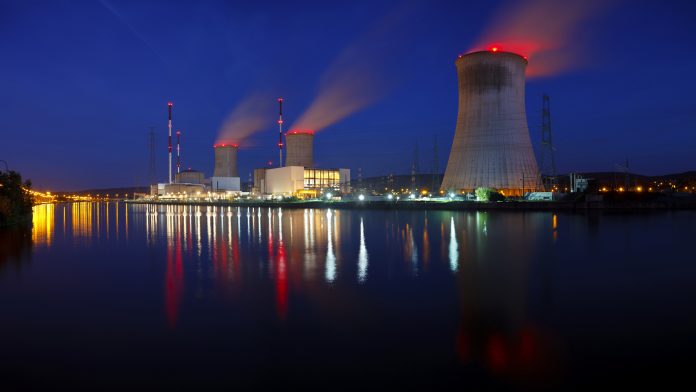Professor Brent Heuser discusses the development of accident tolerant nuclear fuel for nuclear power plants in the aftermath of the Fukushima Daiichi accident.
Global climate change is real, and the world needs clean, safe, and reliable energy sources in order to mitigate the effects of carbon dioxide released from fossil fuels. Wind and solar power are important sustainable energy sources, but they are imperfect supplies of electricity with a not-so-subtle environmental impact. Reasonable energy policy should strive for a balanced portfolio that includes stable baseline electrical supply from nuclear power plants. Unfortunately, nuclear power has faced significant headwinds for decades, most recently due to the 2011 Fukushima Daiichi nuclear disaster.
Nuclear response to the Fukushima Daiichi accident
The response of the US nuclear industry and the U.S. Department of Energy (DOE) to the Fukushima accident was twofold. The first and immediate action was the strengthening of prevention and mitigation strategies, which was epitomised by the ‘Defense in Depth’ strategy, as ordered by the U.S. Nuclear Regulatory Commission in 2012.
In the same year, the Nuclear Energy Institute in the US recommended ‘Diverse and Flexible Coping Strategies’ (FLEX) that has been widely accepted both in the US and abroad. The goal of FLEX is to ensure that on-site equipment, such as electrical generators and water pumps, is available and protected from external events, thereby achieving greater Defense in Depth with respect to potential loss of the ultimate heat sink.
The second response, truly a worldwide effort led by scientists and engineers in Europe and the US, was the development of accident tolerant fuel (ATF).
The thermal power generated in the core of a nuclear reactor decays exponentially after shutdown, decreasing by a factor of ten every three minutes. Radionuclide decay, which also adds heat to the core after shutdown, is more prolonged. Furthermore, significant heat resides in the fuel at shutdown because uranium dioxide, which is the nuclear fuel in light water reactors (LWRs), is a poor thermal conductor.
The removal of these residual heat sources to the ultimate heat sink requires pressurised coolant flow for several days after shutdown. The coolant pressure in operating LWRs ranges from 70 to 150 atmospheres and a loss of coolant pressure exposes hot fuel rods to a high temperature steam.
The zirconium alloys used as LWR fuel cladding perform exceptionally well, with approximately one failure recorded per year per one million rods under normal operating conditions. However, these same alloys react very quickly with high temperature steam, oxidising and failing within minutes at cladding temperatures above 1200°C.
The 1200°C clad temperature limit separates designed-based accidents (DBAs) from beyond designed-based accidents (BDBAs). All operating LWRs in the US and in Europe are designed to withstand DBAs, but not BDBAs. The goal of ATF deployment is to delay rapid oxidation of the fuel cladding during a BDBA, preventing failure over a grace period of at least a few hours, thereby allowing plant operators time to re-establish pressurised coolant flow.
Monolithic cladding, protective coatings, and different fuel material
Initial development of ATF pursued three different concepts:
- Monolithic cladding made of non-oxidising materials or materials that oxidised slowly above 1200°C;
- Protective coatings applied to the currently used zirconium alloy clad tubes that prevented rapid oxidation above 1200°C; and
- Different fuel material with greater thermal conductivity.
The regulatory burden for the introduction of new materials into LWRs, as the first and third concepts require, is extensive and can take between 10 and 20 years. The second concept was immediately recognised as a viable solution in a much shorter period. It is important not to discount the ongoing research related to new monolithic clad materials and fuel matrices. This research has the potential to extend the grace period during a BDBA well beyond that of a protective coating, but its deployment in the US or European LWR fleets will not occur in this decade.
The second concept, protective coatings applied to zirconium alloy clad tubes, has a much easier regulatory path since the decades of testing and operational experience associated with zirconium alloy cladding is not nullified. Furthermore, a viable coating material is known from the behaviour of stainless steel in oxidising environments. Stainless steel forms a chromium-rich oxide that prevents further oxidation. In this context, stainless refers to a lack of tarnish or patina that occurs over time on other metals such as silver and copper.
While many different coating materials have been investigated over the last several years, pure chromium has received the most attention. A pure chromium coating will naturally form a chromium-rich protective oxide under hydrothermal corrosion (that is, normal LWR operating conditions) and oxidising conditions associated with temperature transients. However, development and deployment of coated cladding requires significant testing under normal LWR operating conditions, under transient conditions, and under quenching conditions. Assessment of radiation damage must occur, as must long-term storage implications. Much of this work has been completed, which is a testament to the motivation of the worldwide nuclear community, and chromium-coated test fuel rods are currently running LWR cores in the US.
Preventing further nuclear accidents
Nuclear power remains safe, clean, and reliable. The environmental impact of nuclear power is minimal: the power plants have a very small footprint, a fully fuelled core lasts a few years, and the associated electrical generation does not produce greenhouse gas. However, the world has focused on two accidents that had a profound environmental impact: Chernobyl and Fukushima. These disasters cannot be undone, but we can choose a path that prevents further accidents, thereby reassuring the public. Accident tolerant fuel represents this path. We must ensure that, when future generations look back at policy decisions enacted today, they do so with relief and gratitude that we chose a path to reduce carbon dioxide emission and reverse global climate change.







